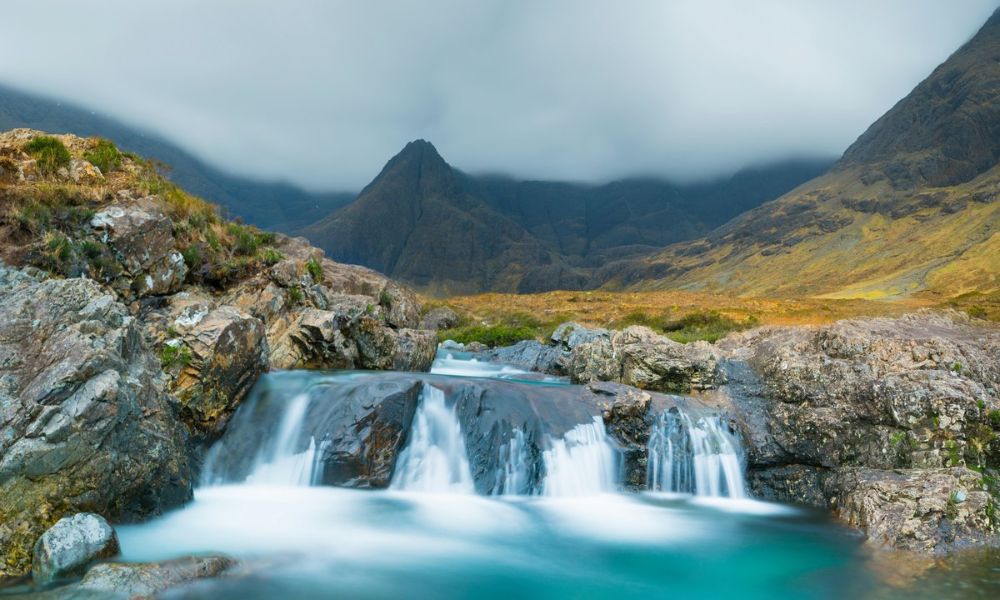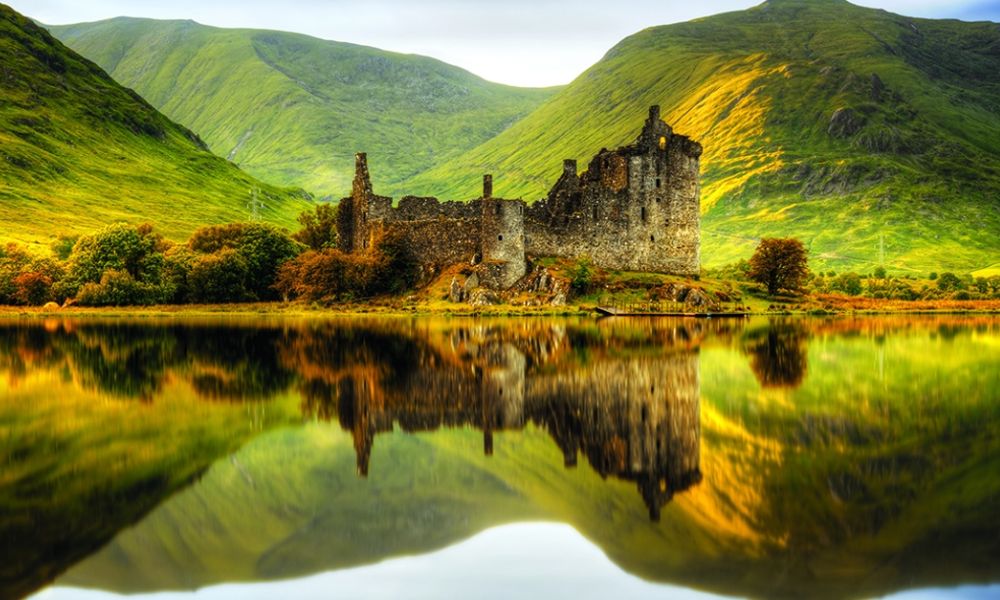Posted by Maris on 22nd Jan 2024
10 Magical Places In Scotland Where You'd Think Faeries Did Reside
Some of Scotland's most magical locations are connected to faerie tales, from fairy homes to portals connecting the mortal world and the otherworldly realm.
The Fairy Glen Of Skye

The breathtaking natural beauty of the Isle of Skye is likely the reason for its strong faerie and magical associations. The largest and most well-known island in the Inner Hebrides archipelago, which is situated on the west coast of mainland Scotland, is filled with craggy mountain peaks, undulating hills, rocky coasts, and glistening lochs.
The Fairy Glen, a strange landslide on the Isle of Skye, is thought to be the home of faeries. Long-standing local stories conjecture that faeries congregated at Fairy Glen and left behind the unusual rock formations that still there today. At the Fairy Glen, the charm of Scotland is brought to life with its meandering walkways, little lochans, and eerie feeling that a few faeries might still be watching from the shadows.
The Fairy Pools Of Skye

Another of Scotland's most enchanted locations is the Fairy Pools, where the breathtaking scenery of Skye harmoniously combines with the fascinating realm of Scottish faerie tales. The Fairy ponds appear to be a group of magnificent waterfalls and glistening ponds at first glance.
But these waters have an unearthly quality because, according to Scottish legend, faeries like to bathe there. The pure, blue-hued waters of the Fairy Pools set against the magnificent Black Cuillin mountains are a geological miracle. Hikers can journey to this enchanted place, where they may momentarily feel as though they are in a real-life storybook.

Loch Awe

While Loch Ness may be home to the Loch Ness monster, rumour has it that the dark waters of Loch Awe harbor a much more menacing supernatural creature. Loch Awe, one of Scotland's biggest and most enigmatic lochs, is thought to be the home of a water fairy called each-uisge.
According to Scottish tradition, the each-uisge is a vicious horse-like monster that can change its form and has a tendency to drown its prey after mounting. Culturally speaking, these tales acted as a cautionary tale about Scotland's deep and dangerous rivers, lochs, and lakes.
Today, tourists may explore the eerie beauty of Loch Awe and its ancient castles while searching for any signs of the creatures rumored to live beneath the water's surface.
Aberdeen

Aberdeen, Scotland is another mystical location that has a reputation for being connected to legendary aquatic life. Stories about selkies living on Aberdeen's coastal coastlines abound in the city's mythology. Selkies are mythological creatures that resemble seals in the water but have the ability to shed their skin and transform into stunning humans on land. They are among the various sea animals that are depicted in folklore.
The legend of these mysterious animals comes to life on the shores of Aberdeen. Discover Scotland's rich marine culture and tradition while taking leisurely strolls along the scenic shoreline and seeing local seals in their natural habitat.
Castle Eilean Donan

The Scottish Highlands fortification of Eilean Donan Castle, perched on a small island where three lochs converge, is revered in the local tradition.
This fortress was first constructed in the 13th century to fend off Norse invasions. Numerous accounts of wandering souls, faeries, and other paranormal experiences have been reported at this location. It's a location that combines the charm of Scottish legend with bizarre architecture to provide guests with an absolutely amazing experience.

Doon Hill & Fairy Knowe

Doon Hill and Fairy Knowe at Aberfoyle, deep in the heart of the Trossachs National Park, are said to have a portal between the human and fairy worlds.
This place has a lovely walk and a grassy mound with several mystery on it. Robert Kirk, a renowned folklorist and preacher from the area, researched Doon Hill in the 17th century and thought it was a doorway to a mystical faerie world. Regretfully, he died before his book about the Faerie realm could be released.
Eventually, it was published posthumously under the title The Secret Commonwealth of Fairies, Fauns, and Elves. According to local mythology, faeries caused his unexpected death because they did not want him to divulge their secrets. The same forested trail that Robert Kirk walked can be explored by visitors to Doon Hill today, and they can leave offerings for the faeries.
The Eildon Hills

The Queen of the Faeries is rumored to reside in the three breathtaking hills known as the Eildon Hills in the Scottish Borders. Numerous instances of the Queen of Elfame can be found in Scottish literature, lore, and songs.
Her most well-known claim to fame is that she transported the actual Thomas the Rhymer to her enchanted world and gave him the ability to prophesy. Upon his return to the physical realm, he rose to prominence as a prophet. Hikers can now explore the Eildon Hills and take in the unmatched vistas of the region's unspoiled splendor.
The Fairy Glen Of Rosemarkie

Rosemarkie's Fairy Glen, situated on Scotland's Black Isle, is rich in faerie tales and Scottish folklore. This tranquil glen welcomes guests with a calm atmosphere, gorgeous waterfalls, and an abundance of flora.
Folklore in the area claims that faeries, drawn to the area by its natural beauty, prefer to congregate in this valley. Leaving little gifts for the Good Folk in the hopes of winning their favor and blessings, visitors to Fairy Glen can stroll along its walking paths, enjoy the views outside, and become fully engrossed in the magical realm of Scottish faerie legend.
The Loch Ness

Rumors of a mythical creature living in Loch Ness's murky waters date back hundreds of years. Scottish tradition holds that the Loch Ness Monster is a kelpie, despite claims by some that it is a gigantic sea serpent, a mythical dragon, or a dinosaur's offspring.
Perhaps the most prevalent faerie in Scotland is the kelpie. To entice mankind, these shape-shifting water spirits assume the appearance of exquisite horses. In Scottish tradition, kelpies are sometimes portrayed as evil creatures that take their victims to watery deaths, although they have also been known to guide and assist humans in certain cases.
In any event, a trip to Scotland is not complete without stopping by the residence of the most fabled creature in all of Scottish tradition. Visitors can discover more about the Loch Ness Monster by taking boat cruises across the loch.
Helix Park

The 100-foot-tall Kelpies in Helix Park are a gigantic sculptures that represent the legendary water spirits that are common in Scottish tradition. Shape-shifting faeries known as kelpies typically assume the form of horses to entice people to approach them.
The magnificent statue located in Helix Park effectively conveys the majesty and splendor of these legendary creatures. In addition to taking a trip inside the Kelpies, visitors can enjoy the stunning surrounds of the park. Along with a tourist center, café, souvenir store, and historical insights into the Kelpies' life, the park offers an immersive and unforgettable folklore experience for people of all ages.

